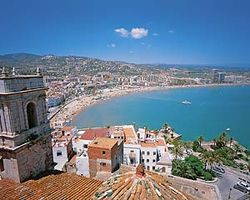RENTAL PENÍSCOLA :
5 holiday rentals from 86€ / 1 night and 350 € / 7 nights
- Swimming pool - 4
- Residences - 11
Odile
07/06/2021
The rock is a must-see
holidaymakers trust us
Trusted shops
0 / 5
Secure payment
Camping Los Pinos
Peníscola - Valencia (Spain)Shared pool
Terrace
Internet
Camping Los Pinos welcomes you to a quiet, friendly environment close to the sea, in Peñíscola, a tourist center on Spain's Costa del Azahar. On...
- + Information450 €/ 5 nights
- + Information250 €/ 5 nights
- + Information400 €/ 5 nights
Bungalow peñiscola ref 030
Peníscola - Valencia (Spain)Television
Sea view
indoor car park
Bungalow Peñiscola REF 030Bungalow Peñiscola is a cozy accommodation with two bedrooms: one with a double bed and the other with twin beds, plus a...
- + Information2%454 €463 €/ 2 nights
Mediterraneo 2005 family complex lek
Peníscola - Valencia (Spain)Shared pool
Television
Terrace
The bungalow in Peñiscola has 4 bedrooms and capacity for 7 people. Accommodation of 80 m² charming and is ample, It has views of the garden. The...
- + Information86 €/ 1 night
Rental owner ?
EARN SOME EXTRA CASH! Rent your home with Locasun
Bungalow morro de gos ii ref 054
Oropesa del Mar - Valencia (Spain)Shared pool
Television
Terrace
Bungalow Morro de Gos Ii Ref 054Bungalow Morro de Gos Ii with three bedrooms: two double beds and one with bunk bed. two bathrooms. In the living room...
- + Information2%454 €463 €/ 2 nights




